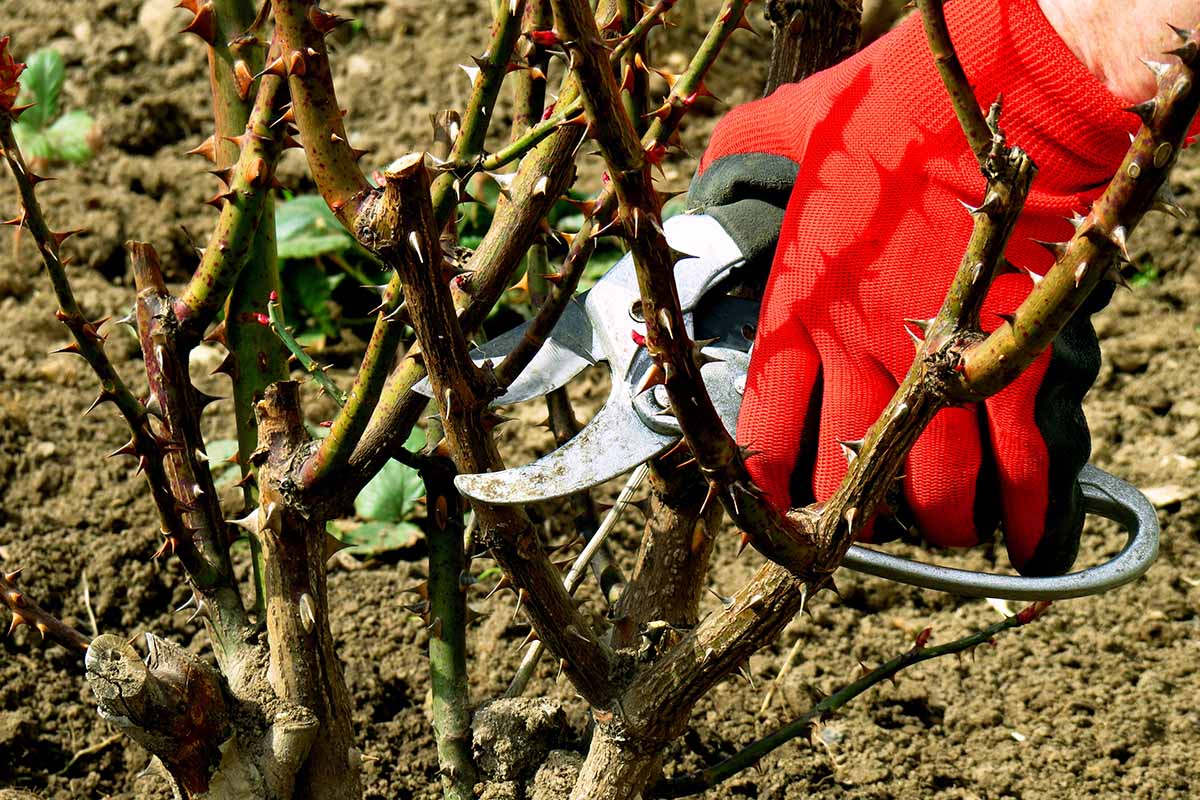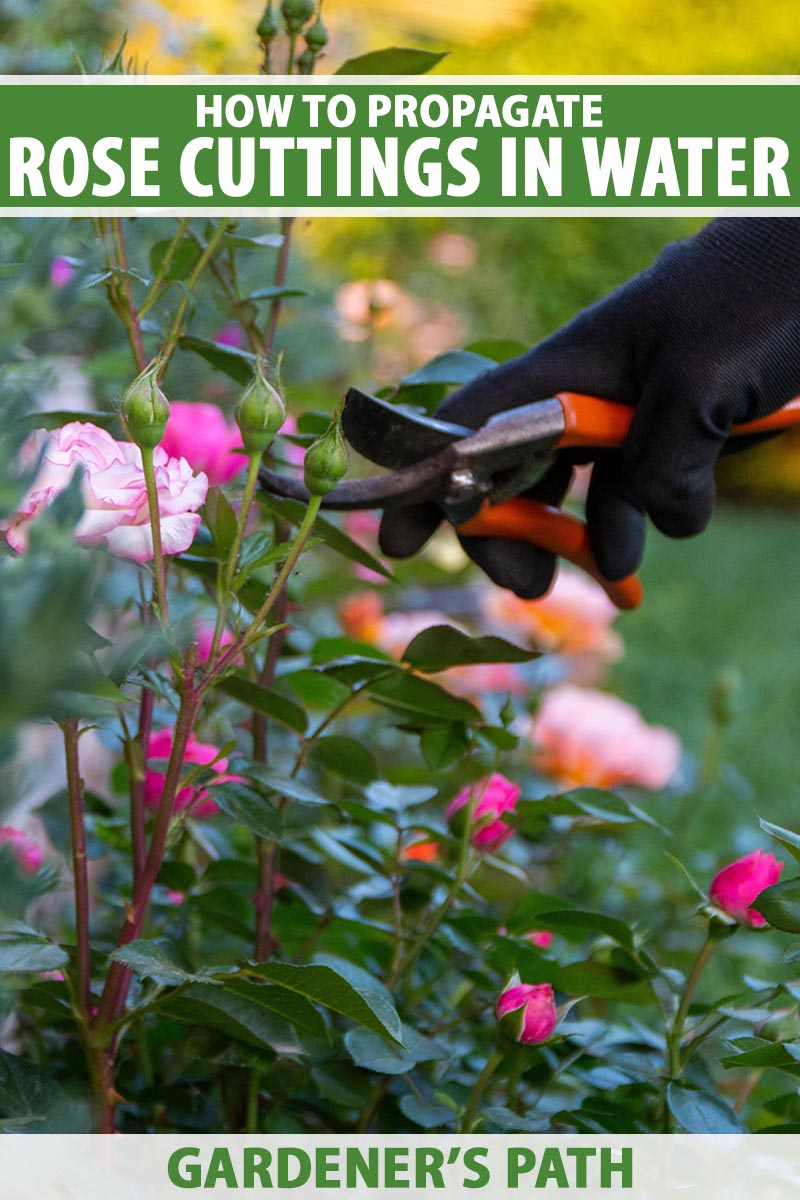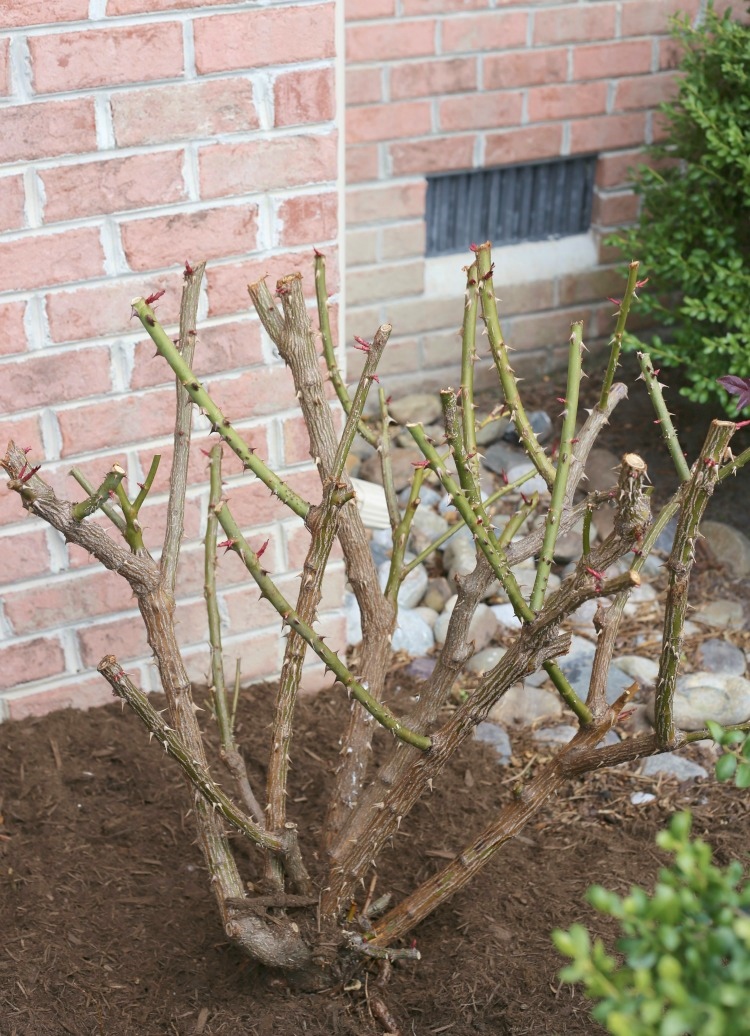The Art of Cutting Back: A Guide to Pruning Roses
Pruning roses is an essential gardening technique that promotes healthy growth, encourages blooming, and maintains the shape of these beautiful flowers. By understanding how to cut roses to grow, gardeners can significantly improve the overall appearance and productivity of their rose bushes. Proper pruning techniques can help control the size of the plant, increase flower production, and reduce the risk of disease. In this article, we will explore the importance of pruning roses and provide a comprehensive guide on how to do it effectively.
Roses are one of the most popular garden flowers, and with over 150 different species, there’s a rose to suit every garden style. However, to keep them looking their best, regular pruning is necessary. Pruning roses can seem intimidating, especially for beginners, but with the right techniques and tools, it’s a task that can be mastered. By pruning your roses regularly, you can enjoy a bountiful display of blooms, improve air circulation, and promote healthy growth.
When it comes to pruning roses, timing is everything. The best time to prune roses depends on the type of rose and the climate you live in. In general, most roses are pruned in late winter or early spring, before new growth begins. This allows the plant to put its energy into producing new growth and blooms, rather than wasting energy on dead or damaged branches. By pruning your roses at the right time, you can encourage healthy growth and promote a bountiful display of blooms.
In addition to timing, the tools you use are also crucial for effective pruning. A good pair of pruning shears, loppers, and a pruning saw are essential for any rose pruning task. By using the right tools, you can make clean cuts, reduce the risk of disease, and promote healthy growth. When pruning, always make clean cuts just above a bud eye, and remove any dead, diseased, or damaged branches. This will help prevent the spread of disease and encourage healthy growth.
By following these simple tips and techniques, you can master the art of pruning roses and enjoy a beautiful display of blooms all season long. Whether you’re a seasoned gardener or just starting out, pruning roses is a skill that’s easy to learn and essential for any rose enthusiast. So why not give it a try? With a little practice and patience, you’ll be pruning like a pro in no time.
Understanding the Basics of Rose Pruning
Rose pruning is a crucial aspect of rose care, and understanding the different types of pruning is essential for promoting healthy growth and encouraging blooming. There are three main types of rose pruning: maintenance pruning, renewal pruning, and dormant pruning. Maintenance pruning is the most common type of pruning and involves removing dead, diseased, or damaged branches to maintain the overall shape and health of the plant. Renewal pruning, on the other hand, involves cutting back the entire plant to encourage new growth and promote blooming. Dormant pruning is done during the winter months when the plant is dormant, and involves pruning the plant to maintain its shape and promote healthy growth.
The best time to prune roses depends on the type of rose and the climate you live in. In general, most roses are pruned in late winter or early spring, before new growth begins. This allows the plant to put its energy into producing new growth and blooms, rather than wasting energy on dead or damaged branches. However, some roses, such as hybrid teas and floribundas, may require pruning in the summer months to promote blooming.
When it comes to pruning roses, having the right tools is essential. A good pair of pruning shears, loppers, and a pruning saw are necessary for any rose pruning task. Pruning shears are used for cutting smaller branches, while loppers are used for cutting thicker branches. A pruning saw is used for cutting larger branches and for making precise cuts. It’s also important to clean and disinfect your pruning tools regularly to prevent the spread of disease.
Before pruning your roses, make sure to inspect the plant for any signs of disease or damage. Remove any dead, diseased, or damaged branches, and cut back any overgrown branches to maintain the overall shape of the plant. When cutting, make clean cuts just above a bud eye, and remove any weak or spindly growth. By following these simple tips and techniques, you can master the art of rose pruning and enjoy a beautiful display of blooms all season long.
Learning how to cut roses to grow is an essential skill for any rose enthusiast. By understanding the different types of pruning and having the right tools, you can promote healthy growth, encourage blooming, and maintain the overall shape of your rose bushes. Whether you’re a seasoned gardener or just starting out, pruning roses is a skill that’s easy to learn and essential for any rose enthusiast.
Preparing Your Roses for Pruning
Before you start pruning your roses, it’s essential to prepare them for the task. This involves removing any dead, diseased, or damaged branches, as well as cleaning your pruning tools to prevent the spread of disease. Start by inspecting your rose bushes for any signs of damage or disease. Look for branches that are dead, diseased, or damaged, and remove them immediately. This will help prevent the spread of disease and encourage healthy growth.
Next, clean your pruning tools with a mixture of water and bleach. This will help prevent the spread of disease and ensure that your tools are free from any bacteria or viruses. Make sure to rinse your tools thoroughly and dry them with a clean towel. This will help prevent any water spots or mineral deposits from forming on your tools.
Once you’ve removed any dead or damaged branches and cleaned your pruning tools, you’re ready to start pruning. Begin by removing any weak or spindly growth, as well as any branches that are crossing or rubbing against each other. This will help improve air circulation and promote healthy growth. Make clean cuts just above a bud eye, and remove any leaves or debris that may be obstructing the cut.
When pruning, it’s also essential to consider the type of rose you’re working with. Different types of roses require different pruning techniques, so make sure to research the specific needs of your rose variety. For example, hybrid teas and floribundas require more extensive pruning than climbing roses or shrub roses.
By preparing your roses for pruning and using the right techniques, you can help promote healthy growth and encourage blooming. Remember to always make clean cuts, remove any weak or spindly growth, and consider the specific needs of your rose variety. With these tips and techniques, you’ll be well on your way to mastering the art of rose pruning and enjoying a beautiful display of blooms all season long.
Learning how to cut roses to grow is an essential skill for any rose enthusiast. By following these simple tips and techniques, you can promote healthy growth, encourage blooming, and maintain the overall shape of your rose bushes. Whether you’re a seasoned gardener or just starting out, pruning roses is a skill that’s easy to learn and essential for any rose enthusiast.
Cutting Techniques for Different Types of Roses
When it comes to pruning roses, different types of roses require different cutting techniques. Hybrid teas, floribundas, and climbing roses all have unique pruning needs that must be taken into account to ensure optimal growth and blooming. In this section, we’ll explore the best cutting techniques for each type of rose, including how to make clean cuts and remove suckers and water sprouts.
Hybrid teas are one of the most popular types of roses, and they require a slightly different pruning technique than other types of roses. To prune hybrid teas, start by removing any dead, diseased, or damaged branches. Then, cut back the canes to about 12-18 inches from the ground, making clean cuts just above a bud eye. This will help promote new growth and encourage blooming.
Floribundas, on the other hand, require a more extensive pruning technique. To prune floribundas, start by removing any dead, diseased, or damaged branches. Then, cut back the canes to about 6-12 inches from the ground, making clean cuts just above a bud eye. This will help promote new growth and encourage blooming.
Climbing roses require a slightly different pruning technique than other types of roses. To prune climbing roses, start by removing any dead, diseased, or damaged branches. Then, cut back the canes to about 6-12 inches from the ground, making clean cuts just above a bud eye. This will help promote new growth and encourage blooming.
Regardless of the type of rose, it’s essential to make clean cuts when pruning. This will help prevent the spread of disease and encourage healthy growth. To make a clean cut, cut just above a bud eye, using a sharp and clean pruning tool. This will help the plant heal quickly and reduce the risk of disease.
Removing suckers and water sprouts is also an essential part of pruning roses. Suckers are shoots that grow from the base of the plant, while water sprouts are shoots that grow from the stems. Both can take energy away from the rest of the plant, so it’s essential to remove them to promote healthy growth and encourage blooming.
By following these cutting techniques, you can help promote healthy growth and encourage blooming in your roses. Remember to always make clean cuts, remove suckers and water sprouts, and consider the specific needs of your rose variety. With these tips and techniques, you’ll be well on your way to mastering the art of rose pruning and enjoying a beautiful display of blooms all season long.
Pruning for Shape and Size
Pruning roses is not just about promoting healthy growth and encouraging blooming, but also about maintaining or achieving a desired shape or size. By pruning your roses regularly, you can control the height and width of your rose bushes, and encourage bushy growth. In this section, we’ll discuss how to prune roses to maintain or achieve a desired shape or size.
Reducing the height of tall rose bushes is a common pruning task. To do this, cut back the canes to about one-third to one-half of their height. This will help control the height of the plant and encourage bushy growth. Make clean cuts just above a bud eye, and remove any weak or spindly growth.
Encouraging bushy growth is another important aspect of pruning roses. To do this, cut back the canes to about 6-12 inches from the ground, making clean cuts just above a bud eye. This will help promote new growth and encourage the plant to produce more blooms.
Pruning for shape and size is an ongoing process that requires regular maintenance. By pruning your roses regularly, you can maintain or achieve a desired shape or size, and encourage healthy growth and blooming. Remember to always make clean cuts, remove weak or spindly growth, and consider the specific needs of your rose variety.
When pruning for shape and size, it’s also important to consider the overall structure of the plant. Look for any branches that are crossing or rubbing against each other, and remove them to improve air circulation and promote healthy growth. Also, look for any branches that are growing outside of the desired shape or size, and prune them back to maintain the desired shape.
By pruning your roses regularly and considering the overall structure of the plant, you can maintain or achieve a desired shape or size, and encourage healthy growth and blooming. Remember to always make clean cuts, remove weak or spindly growth, and consider the specific needs of your rose variety.
Common Mistakes to Avoid When Pruning Roses
Pruning roses can be a delicate process, and making mistakes can have negative consequences for the health and appearance of your rose bushes. In this section, we’ll discuss common mistakes to avoid when pruning roses, including over-pruning, under-pruning, and pruning at the wrong time.
Over-pruning is one of the most common mistakes made when pruning roses. This can cause stress to the plant, leading to reduced growth and blooming. To avoid over-pruning, make sure to only remove the necessary branches and leaves, and avoid cutting back too much of the plant at once.
Under-pruning is another common mistake made when pruning roses. This can cause the plant to become leggy and unproductive, leading to reduced blooming and growth. To avoid under-pruning, make sure to remove any dead, diseased, or damaged branches, and cut back the plant to maintain its shape and size.
Pruning at the wrong time is also a common mistake made when pruning roses. Pruning at the wrong time can cause stress to the plant, leading to reduced growth and blooming. To avoid pruning at the wrong time, make sure to prune your roses during the dormant season, typically in late winter or early spring.
Other common mistakes to avoid when pruning roses include using dull or dirty pruning tools, not making clean cuts, and not removing suckers and water sprouts. By avoiding these mistakes, you can ensure successful pruning and promote healthy growth and blooming in your rose bushes.
To avoid making mistakes when pruning roses, it’s essential to have a good understanding of the plant’s growth habits and pruning needs. Take the time to research the specific pruning needs of your rose variety, and make sure to follow proper pruning techniques to avoid causing stress to the plant.
By following these tips and avoiding common mistakes, you can ensure successful pruning and promote healthy growth and blooming in your rose bushes. Remember to always make clean cuts, remove any dead, diseased, or damaged branches, and prune at the right time to avoid causing stress to the plant.
Aftercare for Pruned Roses
After pruning your roses, it’s essential to provide proper aftercare to ensure they continue to thrive. This includes watering, fertilizing, and mulching. In this section, we’ll discuss the importance of aftercare for pruned roses and provide tips on how to monitor your roses for signs of stress or disease.
Watering is crucial for pruned roses, as it helps to promote healthy growth and prevent stress. Make sure to water your roses regularly, especially during the first few weeks after pruning. Aim to provide about 1-2 inches of water per week, either through rainfall or irrigation.
Fertilizing is also essential for pruned roses, as it provides them with the necessary nutrients for healthy growth. Use a balanced fertilizer that contains equal amounts of nitrogen, phosphorus, and potassium. Apply the fertilizer according to the manufacturer’s instructions, usually in the early growing season.
Mulching is another important aspect of aftercare for pruned roses. Mulch helps to retain moisture, suppress weeds, and regulate soil temperature. Use a layer of 2-3 inches of organic mulch, such as wood chips or bark, around the base of your roses.
Monitoring your roses for signs of stress or disease is also crucial after pruning. Keep an eye out for any unusual growth patterns, discoloration, or pests. If you notice any problems, take action immediately to prevent the issue from spreading.
By providing proper aftercare for your pruned roses, you can ensure they continue to thrive and produce beautiful blooms. Remember to water, fertilize, and mulch your roses regularly, and monitor them for signs of stress or disease.
Learning how to cut roses to grow is an essential skill for any rose enthusiast. By following the tips and techniques outlined in this article, you can promote healthy growth, encourage blooming, and enjoy the rewards of beautiful, thriving rose bushes.
Conclusion: Enjoying the Rewards of Proper Rose Pruning
Proper rose pruning is an essential skill for any rose enthusiast. By following the tips and techniques outlined in this article, you can promote healthy growth, encourage blooming, and enjoy the rewards of beautiful, thriving rose bushes. Remember, pruning is an ongoing process that requires regular maintenance to ensure optimal growth and blooming.
By mastering the art of rose pruning, you can enjoy a variety of benefits, including improved growth, increased blooming, and enhanced overall appearance. Proper pruning can also help to reduce the risk of disease and pests, and promote healthy growth and development.
Whether you’re a seasoned gardener or just starting out, learning how to cut roses to grow is an essential skill that can make a significant difference in the overall appearance and productivity of your rose bushes. By following the tips and techniques outlined in this article, you can enjoy the rewards of beautiful, thriving rose bushes for years to come.
In conclusion, proper rose pruning is a crucial aspect of rose care that requires attention to detail and a willingness to learn. By following the tips and techniques outlined in this article, you can promote healthy growth, encourage blooming, and enjoy the rewards of beautiful, thriving rose bushes. Happy pruning!







